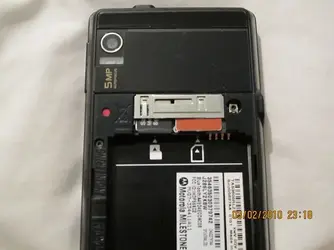In the attached pic, battery cover removed, battery removed.
To the left of the SIM/Memory card metal cover, the small red circle? Some sort of reset button?
To the right of the same, another circular feature, almost looks like an external aerial connector (maybe GPS)?

To the left of the SIM/Memory card metal cover, the small red circle? Some sort of reset button?
To the right of the same, another circular feature, almost looks like an external aerial connector (maybe GPS)?

